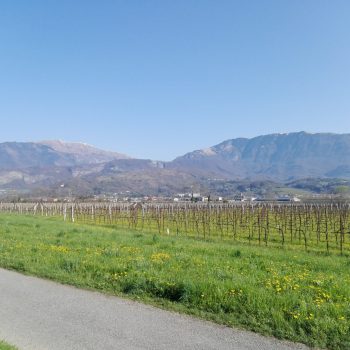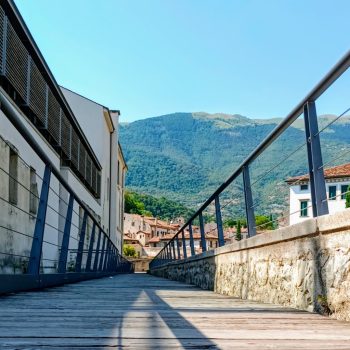DISCOVER VITTORIO VENETO

SANT’AUGUSTA
The climb to the church of Sant’Agusta starts next to the Serravalle Cathedral, by the characteristic monumental staircase built in place of the ancient ‘Porta del Terraglio’, demolished in 1931. Climbing with the right amount of calm, it will take you a scant hour to reach the sanctuary. The itinerary is very popular with the “Vittoriesi”, especially on Sundays.

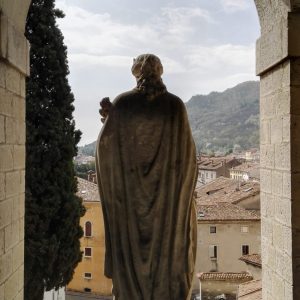
Having climbed the steps characterised by the beautiful fountain and the imposing statue of St Augusta, the ascent is quite steep along a cobbled path and is marked by some beautiful schrines real oratories that have been more or less restored, which can be found at every bend. The panorama widens and sweeps over the basin that encloses Vittorio Veneto when, by now close to the sanctuary, we pass a beautiful mediaeval turret to reach the large stairway that leads to the churchyard. The oldest part of the church contains the relics of the saint from the 4th century and features 15th-century frescoes. The feast of the saint is held on 22 August and its fireworks are famous.
A bar/restaurant the ‘Ristoro S. Agusta’ will give you the opportunity to have a drink or something to eat. On weekends, it is best to make a reservation. We can admire the panorama from the hills of Fregona, to the Vittorio Veneto basin dominated by Mount Altare, the Lapisina valley, the lakes of Revine-Lago and Col Visentin. You can still climb further along the wooded ridge, with very steep and slippery stretches of path, following the signs of the Alta via dei Silenzi to arrive at the Costa di Serravalle. Returning down to Vittorio Veneto, we can descend along the path to the north that leads to the church of Santa Giustina, or we can go down from where we ascend, changing road, going straight at the first bend and we will arrive at Sant’Andrea where the church is worth a visit, it is the oldest church in Vittorio Veneto.
GIARDINO SEGRETO (Secret Garden)
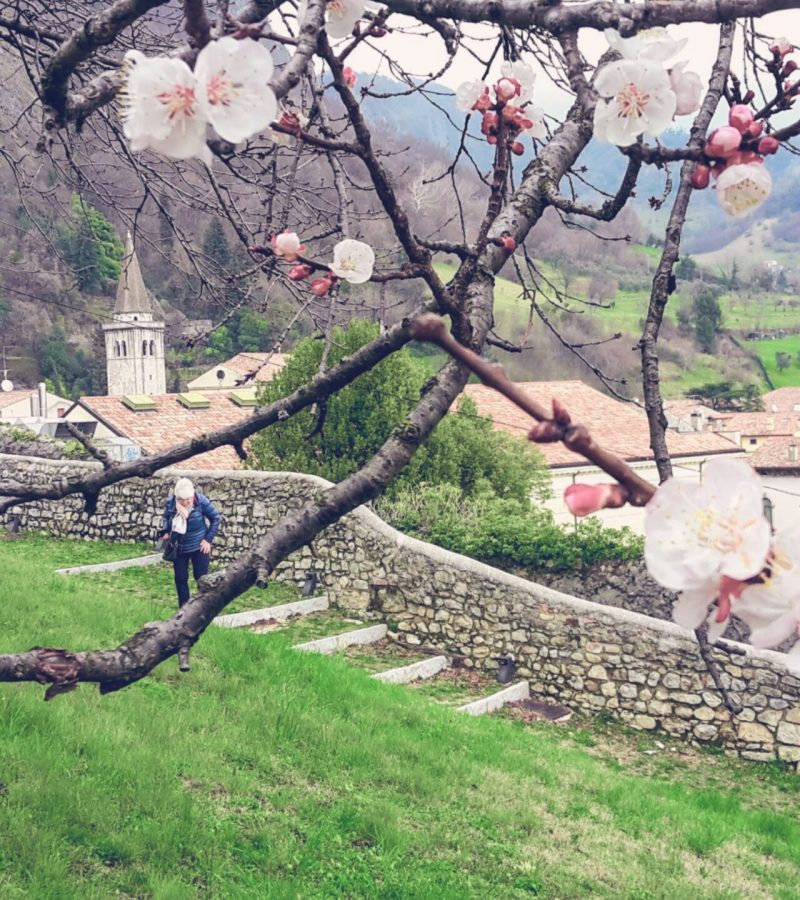
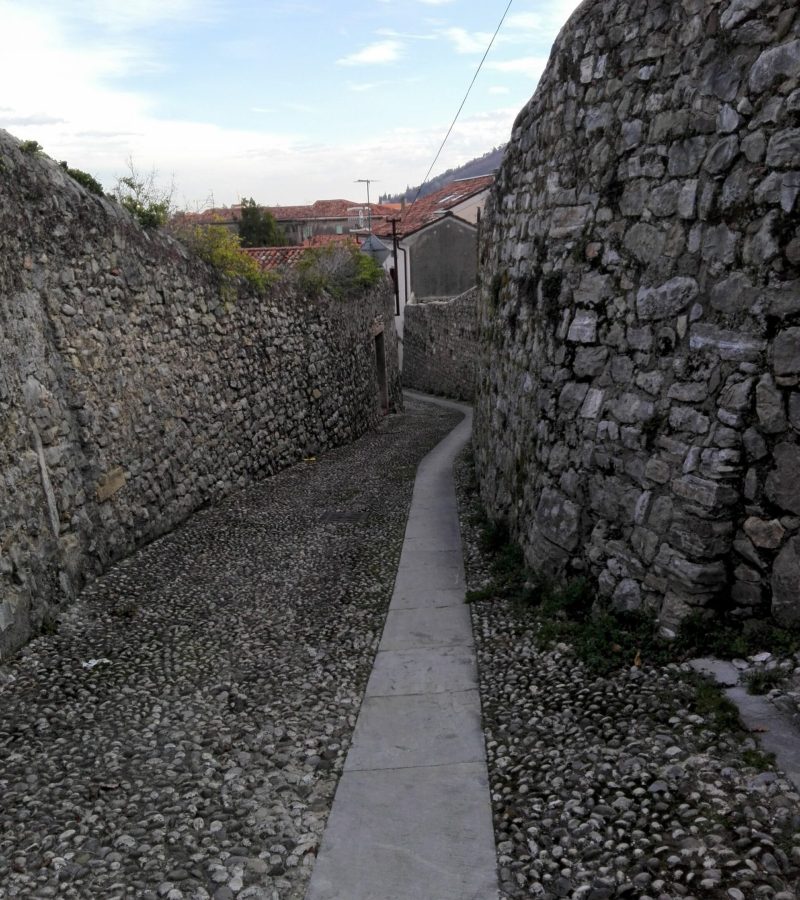
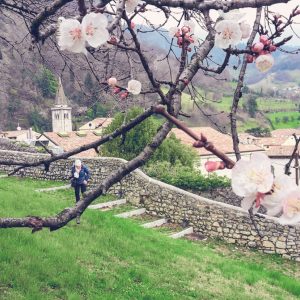
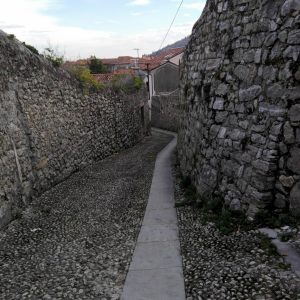
Serravalle has its garden too, and if you don’t know where it actually is, is it very hard to find. But as it deserves your attention, I will show you where you can find it. Next to the Museo Cenedese, in Piazza Flaminio you will notice an arch on the left, it is “Via Piai”. Follow it upwards for about 100 metres and you will find the entrance to the Secret Garden on your right. You can see Serravalle from another perspective.
I like it, how about you?
CENEDA
MONTE ALTARE ( 450 m)
An easy walk punctuated by a short, steep climb at the end along gravel terrain to reach the cross of Monte Altare. It takes two to three hours to walk the loop, including a visit to the exterior of the San Martino castle. The rocky hill of Monte Altare, divides the ancient centres of Serravalle and Ceneda are located. Despite its proximity to the important city centre of Vittorio Veneto, the San Martino hill, with its famous castle, and the San Paolo hill are very interesting from a naturalistic and geological point of view; they also offer interesting starting points for suggestive hikes. You can start near the railway station and continue south to the characteristic village of San Michele di Salsa. Climbing to the left of the church and following a narrow road, after a few hairpin bends, you will soon reach the imposing castle of the bishop of Martino. You can also climb up to the castle from the centre of Ceneda.

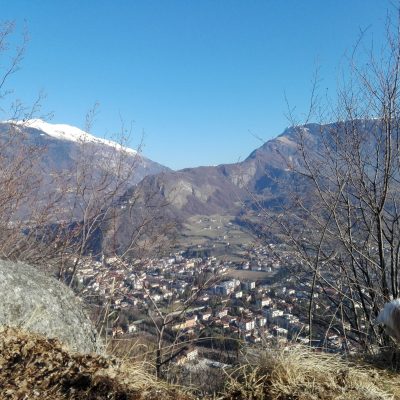
After viewing the castle buildings and admiring the landscape in the direction of Ceneda, take the path (signposted by CAI) next to the car park, which starts immediately to the left and, after a few bends, reaches a small dirt road. Further to the left, go up towards San Paolo. To the right, you descend after a short stretch (after reaching another small road to San Paolo) into the small valley between the two mountains and at a new fork to the left, following the signs, you arrive at the gate of a house on the slopes of Monte Altare. On the right-hand side of the meadow, a path begins that leads to the cross. Finally we can admire the cross up close, until now we had only seen it from below. The Vittorio Veneto cross dominates the entire city, giving us the feeling that it is waking up over us. To the west, there are numerous paths; after passing a spring, you can reach a house and descend to the station, or continue along the hill (following the Cai 1048 path).

Major renovations were carried out after the First World War and later after the 1936 earthquake. Today the building is the seat of the bishop of the Vittorio Veneto diocese and also hosts various events for the spirituality of the area. From the outside, a large crenellated tower is visible, while in the Renaissance inner courtyard the elegant 15th-century palace is impressive.
There is a beautiful panorama from the top and it is a starting point for hiking trails.

The earliest knowledge of the castle dates back to Longobard times; in 1199 the castle was destroyed by the Trevisans as was the entire city.
In the course of time, numerous bishops were elected in the castle of Ceneda, but unfortunately in 1410 the Hungarians sacked the castle and razed the structure to the ground. It was after this massacre that Bishop Correr rebuilt the castle, even rebuilding the tower that is still visible today.During the 16th century it gained particular importance with the opening of a seminary. This lasted until the 18th century, when it was frequented by numerous artists and writers . At the end of the 19th century, with the confiscation of all property by the Kingdom of Italy, this building also fell into the hands of King Victor Emmanuel II, but finding no people interested in buying it , it returned to the Curia in 1881.
CASTELLO DI SAN MARTINO
PARCO PAPADOPOLI
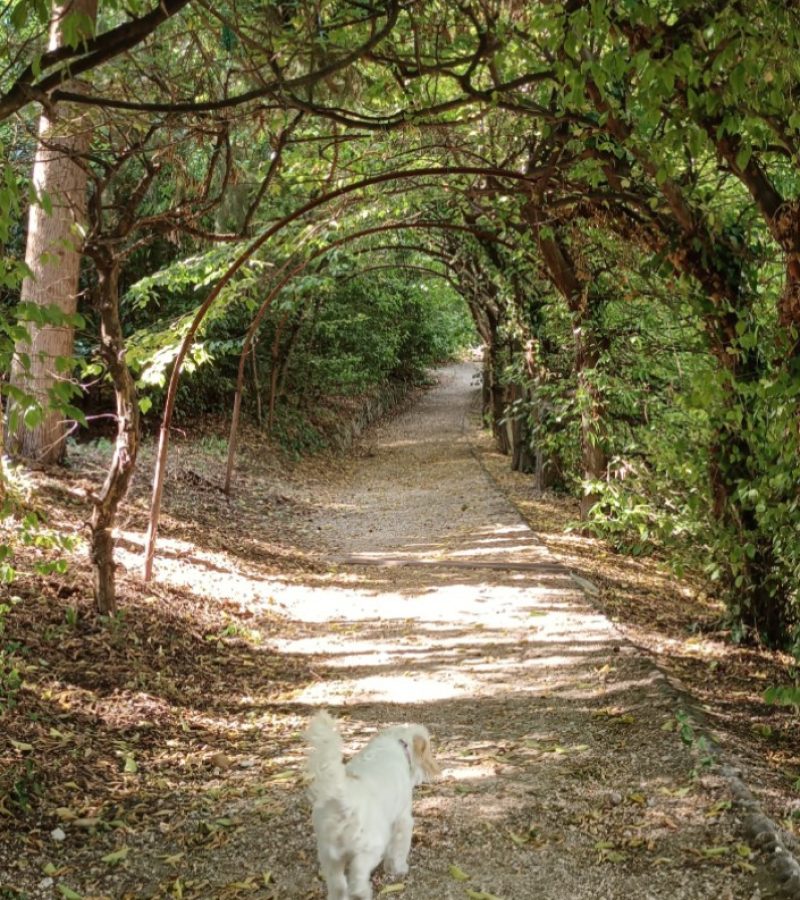
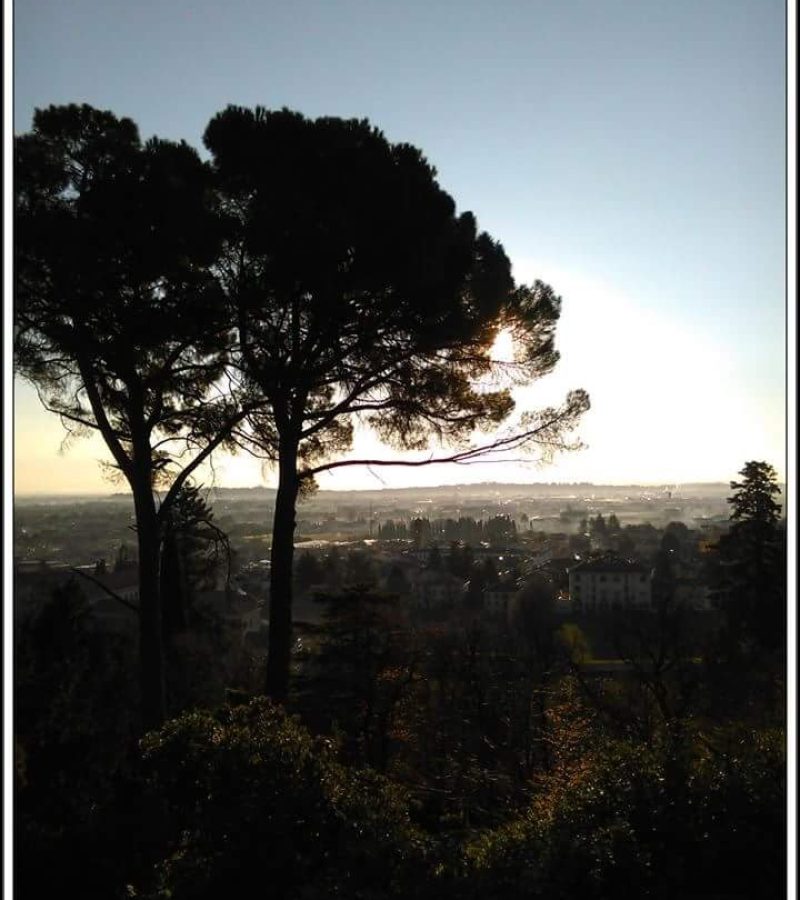
Villa Costantini Morosini Papadopoli-Aldobrandini is a Veneto villa in Vittorio Veneto, located in Ceneda, a few steps of Piazza Giovanni Paolo I, where the cathedral stands. The Papadopoli Park that surrounds this villa was designed by Antonio Caregaro Negrin. Over the centuries, the villa passed through various owners until it was acquired by the municipality. During World War I, the German Command headquarters moved there, while in World War II it was a military hospital. If you want to take a walk in a green and shady place, you can pass a delightful hour or so. The numerous benches welcome visitors of the park to enjoy the beautiful view of the Ceneda district and the Po Valley.
BICYCLE PATH
Tourists who have some time on their hands cannot miss the opportunity to walk or cycle along the cycle path that starts from Serravalle and runs for about five kilometres along the Meschio river, reaching the opposite end of the city, San Giacomo. It gives you the opportunity to enjoy the view of a landscape where nature and history go hand in hand: in fact, since ancient times the Meschio river has been of vital importance to the city, and along its banks real craft workshops have sprung up, some of them whose remains can still be admired today. Many vineyards adorn the banks of the Meschio river and you can enjoy the view of Mount Pizzoc and Col Visentin. Between going (either from San Giacomo or from Serravalle).
